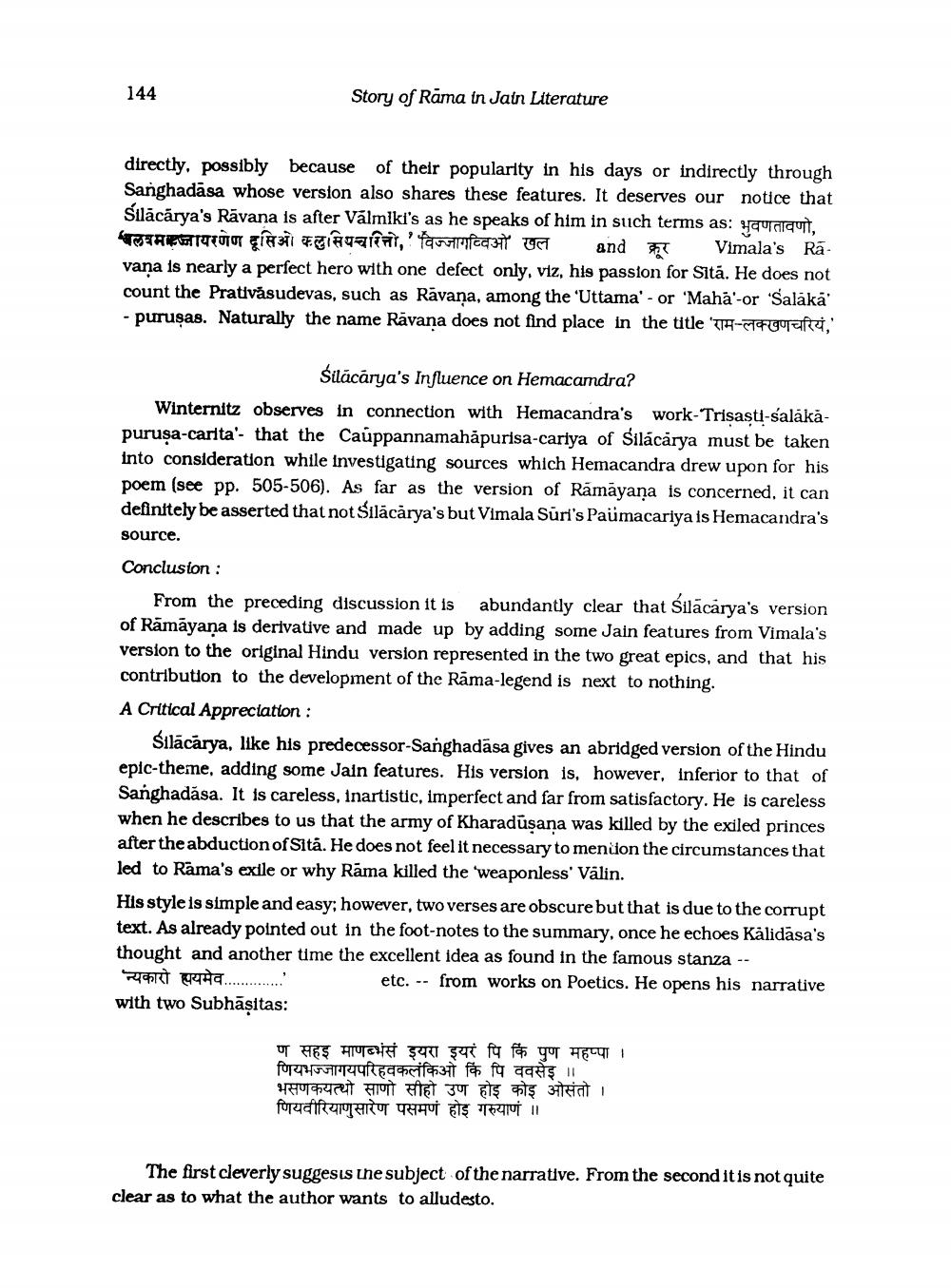________________
144
Story of Rama in Jain Literature
directly, possibly because of their popularity in his days or indirectly through Sanghadása whose version also shares these features. It deserves our notice that Silácārya's Ravana is after Välmlki's as he speaks of him in such terms as: yet, and क्रूर Vimala's Rã
मारणेण दूसिओ को ''विज्जागव्विओं' खल
vana is nearly a perfect hero with one defect only, viz, his passion for Sită. He does not count the Prativasudevas, such as Ravana, among the "Uttama' or 'Maha-or 'Salaka' - purusas. Naturally the name Ravana does not find place in the title
-rated,
Silacarya's Influence on Hemacamdra?
Winternitz observes in connection with Hemacandra's work-Trisasti-salākāpurusa-carita' that the Cauppannamahāpurisa-cartya of Silácárya must be taken into consideration while investigating sources which Hemacandra drew upon for his poem (see pp. 505-506). As far as the version of Rāmāyaṇa is concerned, it can definitely be asserted that not Silacarya's but Vimala Suri's Paumacariya is Hemacandra's
source.
Conclusion:
From the preceding discussion it is abundantly clear that Silācārya's version of Rāmāyaṇa is derivative and made up by adding some Jain features from Vimala's version to the original Hindu version represented in the two great epics, and that his contribution to the development of the Rama-legend is next to nothing.
A Critical Appreciation:
Silacarya, like his predecessor-Sanghadäsa gives an abridged version of the Hindu epic-theme, adding some Jain features. His version is, however, inferior to that of Sanghadása. It is careless, inartistic, imperfect and far from satisfactory. He is careless when he describes to us that the army of Kharaduṣana was killed by the exiled princes after the abduction of Sita. He does not feel it necessary to mention the circumstances that led to Rama's exile or why Rama killed the 'weaponless' Välin.
His style is simple and easy; however, two verses are obscure but that is due to the corrupt text. As already pointed out in the foot-notes to the summary, once he echoes Kalidasa's thought and another time the excellent idea as found in the famous stanza --
'न्यकारो वयमेव ..........'
etc. from works on Poetics. He opens his narrative
with two Subhāṣitas:
ण सहइ माणसं इयरा इयरं पि किं पुण महप्पा । णियभज्जागयपरिहवकलंकिओ किं पि ववसेइ ॥ भसणकयत्थो साणो सीहो उण होइ कोइ ओसंतो । णियवीरियानुसारेण पसमणं होइ गस्याणं ॥
The first cleverly suggests the subject of the narrative. From the second it is not quite clear as to what the author wants to alludesto.




